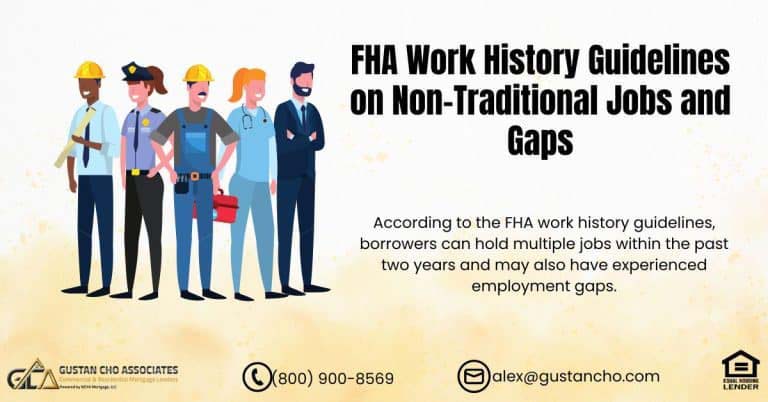Steps in the Underwriting Process: What Borrowers Need to Know in 2025
If you’re buying a home or refinancing your current mortgage, you’ll eventually go through something called underwriting. It might sound complicated, but it doesn’t have to be. In this guide, we break down the steps in the underwriting process using everyday language. Our goal is to help you understand what to expect, avoid delays, and feel confident throughout the loan journey.
At Gustan Cho Associates, we walk our borrowers through every step, from start to finish, to make sure there are no surprises. Let’s dive in.
What Is Underwriting?
Underwriting is the stage in the mortgage process where a lender examines your financial documents and credit history to determine if they should approve your loan. The underwriter ensures that all criteria align with loan program regulations and that your capacity to repay the loan is evident.
Think of underwriting as the final check before the lender gives the green light to close on your home.
Understand the Underwriting Process – Get Approved with Confidence!
Apply Now And Get recommendations From Loan Experts
Quick Overview: Steps in the Underwriting Process
Here are the key steps in the underwriting process:
- Get Pre-Approved
- Submit a Complete Loan Application
- Loan Is Assigned to a Processor
- The Processor Submits the File to Underwriting
- Underwriter Reviews and Issues Conditional Approval
- You Submit Any Remaining Conditions
- Underwriter Reviews Final Docs and Issues Clear to Close
- Closing Day!
Now, let’s go through each step in more detail.
Step 1: Get Pre-Approved
The first step in the underwriting process is getting pre-approved. This is when you give some basic money papers to your loan officer. They will look at your credit score, how much money you make, and what debts you have. This helps them see if you can get a loan. Pre-approval is important because it sets the stage for everything that comes next.
Why it matters: If you’re properly pre-approved, there should be no major surprises during underwriting. A strong pre-approval helps prevent last-minute loan denials.
At Gustan Cho Associates, we go the extra mile to ensure our pre-approvals are solid. We look at more than just credit scores—we look at the full picture.
Step 2: Submit a Full Loan Application
Once you find a home and sign a purchase contract, you start the steps in the underwriting process by submitting your full loan application. To do this, you need to gather some important documents. First, you will need your W2s or 1099s to show your income. Next, make sure to include your pay stubs to provide proof of how much you earn.
You might also need to submit your tax returns, but only if your lender asks for them. Don’t forget to gather your bank statements to show your savings.
Lastly, you will need to provide your ID and social security number, along with the purchase contract for your new home. These documents help the lender understand your financial situation and decide if they can approve your loan.
Having complete and accurate documents upfront speeds up the next steps in the underwriting process.
Step 3: Loan Assigned to a Processor
After your loan application is filled out, it goes to a loan processor. You can think of this person like the quarterback of your team. Their job is to keep everything organized and check all the details before sending your file to the underwriter.
The loan processor will contact you if they notice anything is missing or if something is unclear.
Pro Tip: Respond quickly to calls and emails! When borrowers take too long to send in their documents, it can cause delays in the process.
Step 4: File Submitted to Underwriting
Once your processor has everything in order, the loan is submitted to underwriting, where the underwriter begins reviewing it.
They will look at:
- Credit report
- Debt-to-income ratio (DTI)
- Employment history
- Income documents
- Appraisal
- Bank statements
- Source of down payment
At this point, your underwriter is looking to make sure you meet all the guidelines for the loan you’re applying for.
Following these steps in the underwriting process makes everyone feel confident about the loan decision.
Step 5: Conditional Approval
If your file looks good, the underwriter issues a conditional approval. This means your loan is approved as long as you provide a few more documents or meet certain conditions.
Some common conditions include:
- Updated pay stubs
- Letter of explanation for recent credit inquiries
- Proof of large deposits
- IRS tax transcripts
- Gift letter and donor’s bank statement (if using gift funds)
Remember: A conditional approval is not the same as a final approval—but you’re close.
Step 6: Submit Conditions
Now, it’s time to clear those conditions. This can feel a bit tricky, but don’t worry! It’s important to work closely with your processor and loan officer to make sure you gather everything you need quickly. The faster you send the required papers, the faster you can move forward in the underwriting process.
At Gustan Cho Associates, we understand that time is essential. That’s why we have processors and loan officers ready to help you seven days a week. This includes nights and weekends! Our team is here to help clear conditions fast, making the steps in the underwriting process smoother for you.
Step 7: Clear to Close
Once the underwriter signs off on your conditions, you receive the golden ticket: Clear to Close (CTC). This means your loan is fully approved. You can now schedule your closing and prepare to sign the final documents.
Most of our borrowers at Gustan Cho Associates receive their Clear to Close within 14 to 21 days—and sometimes even faster.
Step 8: Closing Day
On closing day, you will have an important meeting with a notary or visit a title company. This is where you will sign all the final loan documents. It’s a big step in the underwriting process, which means your loan is almost ready to go!
Remember to bring your ID so they can verify your identity. You should also bring any money needed for closing, such as your down payment or some fees.
After you sign everything and the money is all set, you will get the keys to your new home. Congratulations—you’re officially a homeowner! This moment is exciting and marks the end of a long journey. Enjoy your new space!
Let’s work together to navigate underwriting and get you into your dream home!
Apply Now And Get recommendations From Loan Experts
Updates for 2025: What’s New in the Underwriting Process
In 2025, lenders have started using more advanced automation tools to speed up underwriting and flag issues sooner. But human underwriters still play a key role, especially on complex loans like:
- FHA loans with manual underwriting
- VA loans with high DTI
- Bank statement loans for self-employed borrowers
- Non-QM and portfolio loans
Gustan Cho Associates specializes in loans that many lenders won’t touch. Even if you’ve been turned down elsewhere, we may still be able to get you to the finish line.
Final Thoughts: Why Choose Gustan Cho Associates
At Gustan Cho Associates, we understand that everyone’s needs are different when it comes to loans. That’s why we don’t believe in a one-size-fits-all approach. We make it easier for you by not having extra rules, called lender overlays, on loans like FHA, VA, USDA, and Conventional loans. We also work quickly, so you can close your loan quickly, even if it’s tricky.
With strong connections to over 210 lenders, we can offer you many choices. Our team is here to help you every day of the week, including evenings and holidays.
Whether you are buying your first home, investing in real estate, or fixing your credit, we are with you through all the steps in the underwriting process. If you need help, call us at 800-900-8569 or email us at gcho@gustancho.com. Let’s work together to make your dream of owning a home come true!
Frequently Asked Questions About the Steps in the Underwriting Process:
Q: What are the Steps in the Underwriting Process for a Home Loan?
A: The steps in the underwriting process include getting pre-approved, submitting your loan application, working with a loan processor, having your file reviewed by an underwriter, getting conditional approval, sending in final documents, and finally receiving your clear to close.
Q: How Long do the Steps in the Underwriting Process Usually Take?
A: The steps in the underwriting process usually take about 2 to 3 weeks. At Gustan Cho Associates, many loans get clear to close in just 14 to 21 days—sometimes even faster.
Q: What Documents do I Need to Start the Steps in the Underwriting Process?
A: To start the steps in the underwriting process, you’ll need W2s or 1099s, pay stubs, bank statements, a copy of your ID, your social security number, and the purchase contract for your new home.
Q: What Does ‘Conditional Approval’ Mean During the Steps in the Underwriting Process?
A: Conditional approval means the underwriter likes what they see but still needs a few more things—like a letter of explanation or proof of a deposit—before giving full approval.
Q: Can My Loan Still Get Denied During the Steps in the Underwriting Process?
A: Yes, it can—especially if something big changes, like your job, credit score, or bank account balance. That’s why staying in touch with your loan officer during every step in the underwriting process is important.
Q: What Happens After I Get ‘Clear to Close’ in the Underwriting Process?
A: Once you get clear to close, it means your loan is fully approved. You’ll set a closing date, sign the final paperwork, and then you’ll get the keys to your new home. It’s the last step in the underwriting process!
Q: Why is Getting Pre-Approved the First Step in the Underwriting Process?
A: Getting pre-approved is important because it tells you how much home you can afford and helps avoid delays or surprises later in the underwriting process.
Q: What Does the Underwriter Check During the Steps in the Underwriting Process?
A: The underwriter checks your credit, income, debts, job history, savings, home appraisal, and other details to make sure you can safely afford the loan. This is one of the most important steps in the underwriting process.
Q: I’m Self-Employed—Can I Still Go Through the Steps in the Underwriting Process?
A: Yes! At Gustan Cho Associates, we help self-employed borrowers with bank statement loans and P&L-only loans, making the underwriting process easier without needing tax returns.
Q: How Can Gustan Cho Associates Help Me with the Steps in the Underwriting Process?
A: We guide you through each step, answer your questions fast (even on weekends), and offer flexible loan programs—even for borrowers with low credit or tricky situations. We make the steps in the underwriting process smoother and less stressful.
This blog about “Steps In The Underwriting Process By Mortgage Lenders” was updated on April 3rd, 2025.
Get Pre-Approved & Understand the Underwriting Process Now
Apply Now And Get recommendations From Loan Experts











I have a pre-approval with a credit union (90 LTV, $1.6m @ 4.75, 12-month reserves). Need to see if you have a lower reserve and rate.